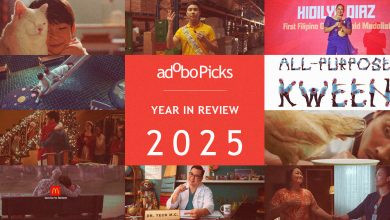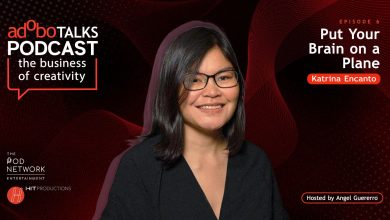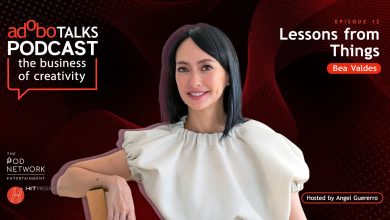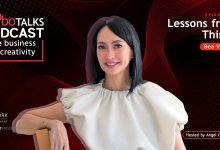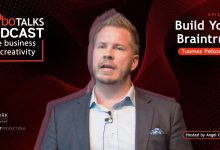MANILA, PHILIPPINES — Digital marketing is a constantly evolving playground that brands, despite its complexity and unpredictable transformations, have no choice but to learn, understand, and utilize according to their needs. As the digital age continues to warp and shift into different spaces, requiring unique strategies, there is an even greater urgency among brands to enter the space, and capture their audiences before things start to change again. With this, adobo Magazine has tapped digital marketing expert Ibarra Villaseran, Client Service Director of Truelogic, on a new column dedicated to giving brands, marketers, and advertisers the basics of digital, and then some: “Digital Primer.”
In this first piece, Ibarra recalled an interesting comment from one of his presentations, and how it underlines the importance of digital strategies in this day and age. He also shared his conversation with marketers Ruby Rodriguez and Jayme Uy in his Digital Primer Podcast:
I had just completed a presentation and opened the floor up for questions. The seats in the room were filled with C-level executives, whom I thanked the marketing department once again for inviting. It was about half past nine in the morning, and the day was gearing up to be a productive one.
My invitation was first met with silence, and then the CEO chimed in. Taking their cue, each of the executives began taking turns engaging. In what started as an inquiry on a web build, the crucial role that Search Engine Optimization (SEO) played began to dawn on them. Caught in the changing tide, one of them remarked:
“Ang galing niyo talaga gumawa ng website. Pumunta lang sa website na ginawa niyo, nagcoconvert. Paano yun?” (You guys are really good at making websites. As long as they go to a website that you made, they convert. How does that happen?)
He was one of the funny ones in the group, and despite the sarcasm, I appreciated the question. It highlights the paradigm shift that needs to happen in the Philippines if companies want to begin leveraging their digital assets.
First, he is correct that in Step 02, people go to a website. Then in Step 03, a percentage converts. The difference is really in Step 01, wherein all of this is happening within the context of search, i.e. when there is “intent.”
“Intent” refers to the underlying motivation behind a user’s search query.
For example, a person searching for “best pizza in New York City” has the intent to find the best pizza places in the Big Apple. Similarly, a person searching for “how to fix a leaky faucet” has, quite obviously, the intent to fix their faucet. By understanding the intent behind a user’s search query, businesses can tailor their digital marketing efforts and provide relevant solutions to their target audience.
We’re not here to make a Coke drinker become a Pepsi drinker. That’s a different campaign altogether, a different, long, and complex process. What we’re concerned about in SEO at different conversion funnel stages are those already on the market right now.
I continued my presentation. “Given, let’s say, general population N, I’m willing to bet that there is a subset that is looking for your product RIGHT NOW. And so, in the game of SEO, the question that we ask ourselves is: ‘Of those people already in the market right now, how many of those guys do you get?'”
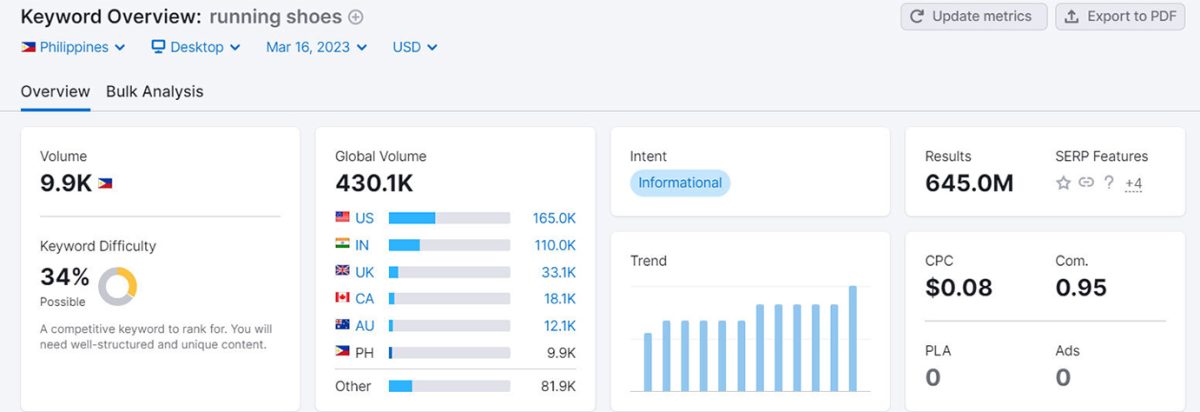
Above is the estimated monthly search volume for running shoes, for example. As you can see, there are approximately 9,900 “low-hanging fruit” customers that the company could possibly be engaging with. If left ignored, this translates to 9,900 potential customers that are easy pickings for competitors.
Google does not have a “random” button. Its UI/UX experts would have placed one should it be needed. The reason is that when people go to Google, which handles over 2 trillion searches per year, they already have a specific query that needs answering. The question for us is: when they do a search, will they see you?
Leveraging the power of intent and understanding how SEO plays a vital role in conversions is essential in today’s digital landscape.
In fact, marketing veteran Ruby Rodriguez, emphasized the importance of intent in a conversation in the Digital Primer Podcast: “Once the consumer searches for a certain topic, that means there’s interest for the consumer to exert effort in typing in whatever keywords they want to use. This is now your chance to capture that interest,” Ruby said. She emphasized the importance of leveraging this interest to engage consumers and provide them with the information they are searching for.
On the other hand, Jayme Uy, a real estate marketing professional, delved into the nuances of lead quality and the critical role of intent in the real estate industry in another episode of thepodcast. She highlighted the feedback from her sales team that leads from sources like Facebook and Instagram often exhibited lower intent compared to those generated through the company website.
Jayme noted that website-generated leads displayed a more purposeful engagement, with potential buyers actively seeking specific properties and information: “The leads that truly stand out are the ones that have taken the effort to explore our website, often through high-ranking Google searches.” This proactive behavior indicated a genuine interest in the offerings, translating into a higher likelihood of conversion. These leads showcased a level of intent that elevated them above the noise of casual browsing.
So, don’t let your competitors snag those easy-picking “low-hanging fruit” customers while you sit on the sidelines. By harnessing the power of intent and understanding how SEO can help increase conversions, you can take your digital presence to the next level and achieve your business goals.
So, are you ready to make your mark in the digital world? It’s time to take advantage of the power of intent and maximize the potential of your digital assets.
ABOUT THE AUTHOR

Ibarra Villaseran
Truelogic, Client Service Director
Ibarra Villaseran has been at the helm of Truelogic since 2018 and has overseen the Digital Agency’s exponential growth. With over 2 decades in Marketing Communications, his favorite roles remain to be: husband, father, and friend.



